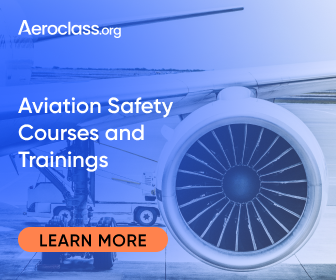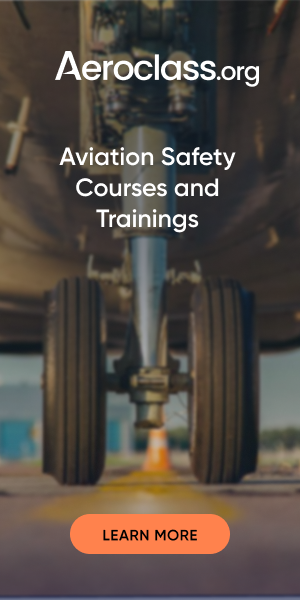High Altitude Endorsement – Aviation Training
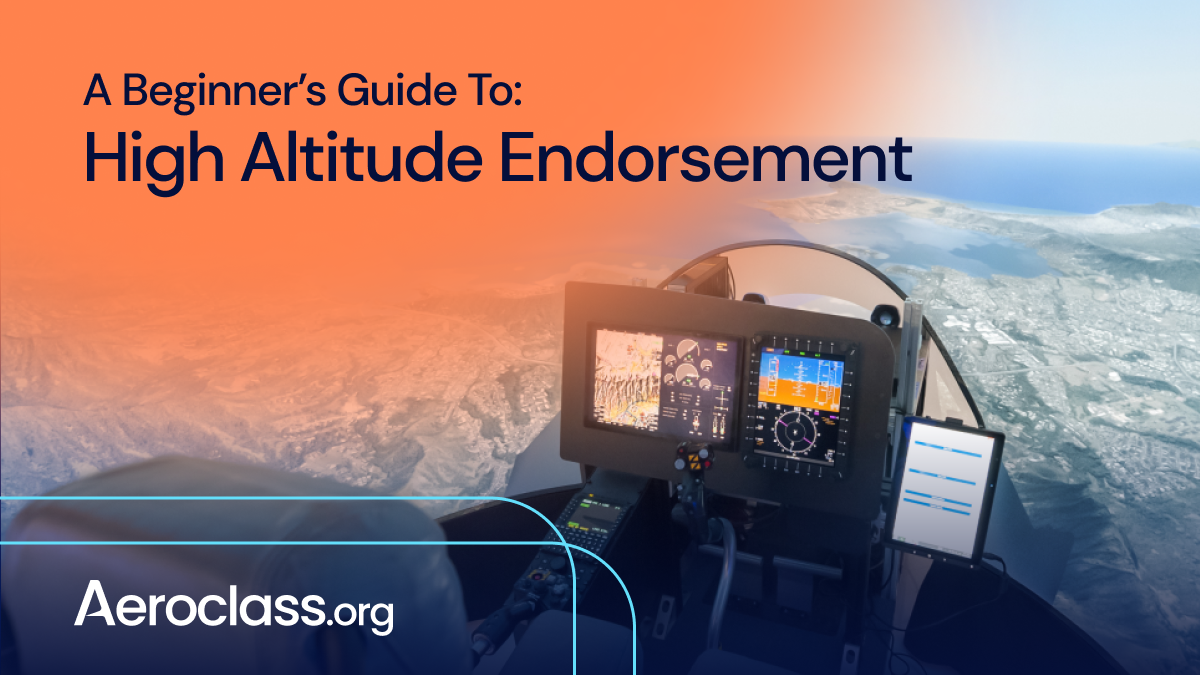
- Flying at High Altitudes
- High Altitude Environment
- Effects on Human Body
- Hypoxia
- Effects on Airplane Characteristics
- Coffin corner
- High Altitude Endorsement Flight Training
- What subjects do you need to cover for high altitude endorsement?
- Pilot In Command (PIC)
- FAQ
- What is considered high altitude for an aircraft?
- How high can you fly unpressurized?
- At what altitude does the FAA require oxygen?
- Can you get a high-performance endorsement as a student pilot?
The aerodynamics and physiological characteristics of a high-performance airplane can differ significantly from those of a lower-altitude aircraft. Because of NTSB (National Transportation Safety Board) concerns regarding pilots’ potential lack of knowledge and competence, a provision was added to 14 CFR (Title 14 of the Code of Federal Regulations section 61. This was created to ensure that airmen are proficient in the operation of flying the airplane in accordance with the regulations.
The FAA emphasizes the necessity for pilots to have more knowledge and abilities in order to fly aircraft at greater altitudes. Training for flying conditions above FL250 (higher than 25,000 feet) should include both ground and flight training in high-altitude operations, as well as a certificate to pilot is proficient in the operation, which is called high altitude endorsement.
Following completion of the ground and flight training, the approved instructor who delivered the instruction shall submit an altitude endorsement in the pilot’s logbook or training record confirming that high altitude operations training was provided.

Title 14 CFR Part 61 specifies the knowledge and skill criteria for several types of pilot certificates and ratings, including the category, class, and type ratings that may be put on them. Part 61.31, on the other hand, specifies the “type rating requirements, additional training, and authorization requirements.”
According to paragraph 61.31 g which is about “additional training required for operating pressurizes aircraft capable of operating at high alt altitudes.”
“Except as provided in paragraph (g)(3) of this section, no individual may act as pilot in command of a pressurized aircraft (an aircraft that has a service ceiling or maximum operating altitude, whichever is lower, above 25,000 feet MSL) unless that individual has received and logged ground training from an authorized instructor and obtained an endorsement in the person’s logbook or training record from an authorized instructor who certifies the person has satisfactorily accomplished the ground training.“
Ground training mentioned includes high-altitude aerodynamics, effects, symptoms, and causes of hypoxia (due to low oxygen levels) and any other high-altitude illness.
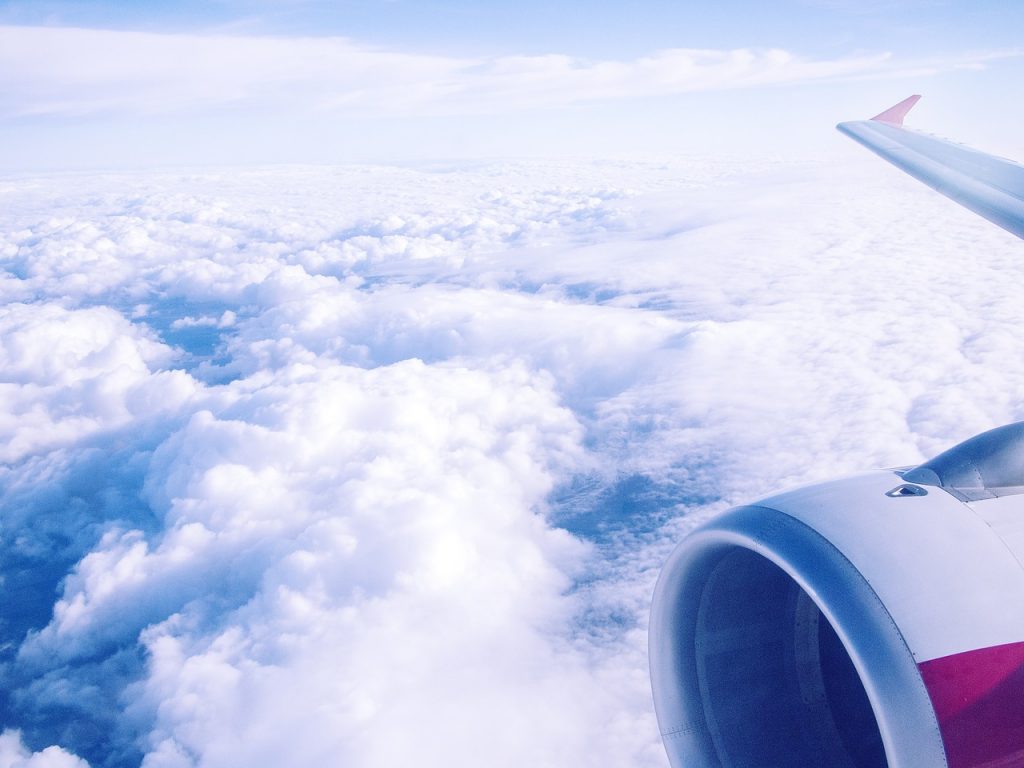
Flying at High Altitudes
A flight at a high altitude is one that exceeds 25,000 feet. Pilots should be mindful of the altered flying characteristics caused by the increased altitude. This chapter discusses differences and procedures briefly. Supplemental oxygen is already required by the FAA for flights over 14,00 feet.
With the advancement of high-performance aircraft, piston-engine aircraft can now fly at higher altitudes, either with a single or twin engine. The Cirrus SR22T, with its 25,000 feet maximum service ceiling and 315 horsepower turbocharged engine, is an example. Pilots who desire to fly higher should be aware that additional training procedures are required. You will need to certificate your endorsement.
High Altitude Environment
Weather varies at greater altitudes due to the features of the environment and winds at these heights. At altitudes greater than 25,000 feet, the temperature can be about -20 degrees Celcius, and until it reaches the stratosphere, the temperature drops 6.49 degrees Celsius for every 1-kilometer increase in height.
In the troposphere, atmospheric density falls steadily with attitude, reaching 50% of its sea-level value at 18,000 feet MSL. This implies that at this height, the oxygen concentration of the air is half of what it is at sea level. Because the human body cannot handle high quantities of oxygen, planes traveling at these altitudes have pressurized cabins.
On October 25, 1999, a Learjet 35 crashed in South Dakota due to control crew incapacity caused by hypoxia. The airplane was flying at FL 390 when it was intercepted by US Air Force Air National Guards and continued to fly until it was crushed. This tragedy also prompted authorities to issue additional advisory circulars about aviation flying over FL250 altitudes. The cause of the accident was explained as followed: “The National Safety Board determines the probable cause of this accident was incapacitation of the flight crewmembers as a result of their failure to receive supplemental oxygen following a loss of cabin pressurization, for undetermined reasons.”

Effects on Human Body
To ensure the safety of flight at high altitudes, the pilot of a high-performance airplane must understand the physiological effects of high altitude flight and the effect of hypoxia on an individual to perform complex tasks. Humans need their lungs to absorb oxygen from the atmosphere, and changes in the atmospheric environment can impact a human’s respiration during flight.
In the atmospheric region spanning from sea level to 12,000 feet MSL, the human body works normally. The brain’s oxygen saturation allows for proper functioning in this range. While optimum oxygen saturation is 96 percent at sea level, it drops to 87 percent at 12,000 feet. Further decreases in saturation might also result in mortality.
The atmospheric pressure decreases dramatically between 12,000 and 50,000 feet, resulting in significantly less oxygen in the air and the possibility of hypoxia. Hypoxia is a shortage of sufficient oxygen in body cells or tissues caused by insufficient oxygen supply, insufficient oxygen transportation, or the inability of body tissues to utilize oxygen.
Even though many airmen who did not get high altitude endorsement training feel they understand hypoxia symptoms, this is deceptive and hazardous since one of the impacts of hypoxia is impaired judgment. In an altitude chamber, the symptoms of hypoxia may be felt at ground level. You can also undergo rapid decompression to observe the instant effect.
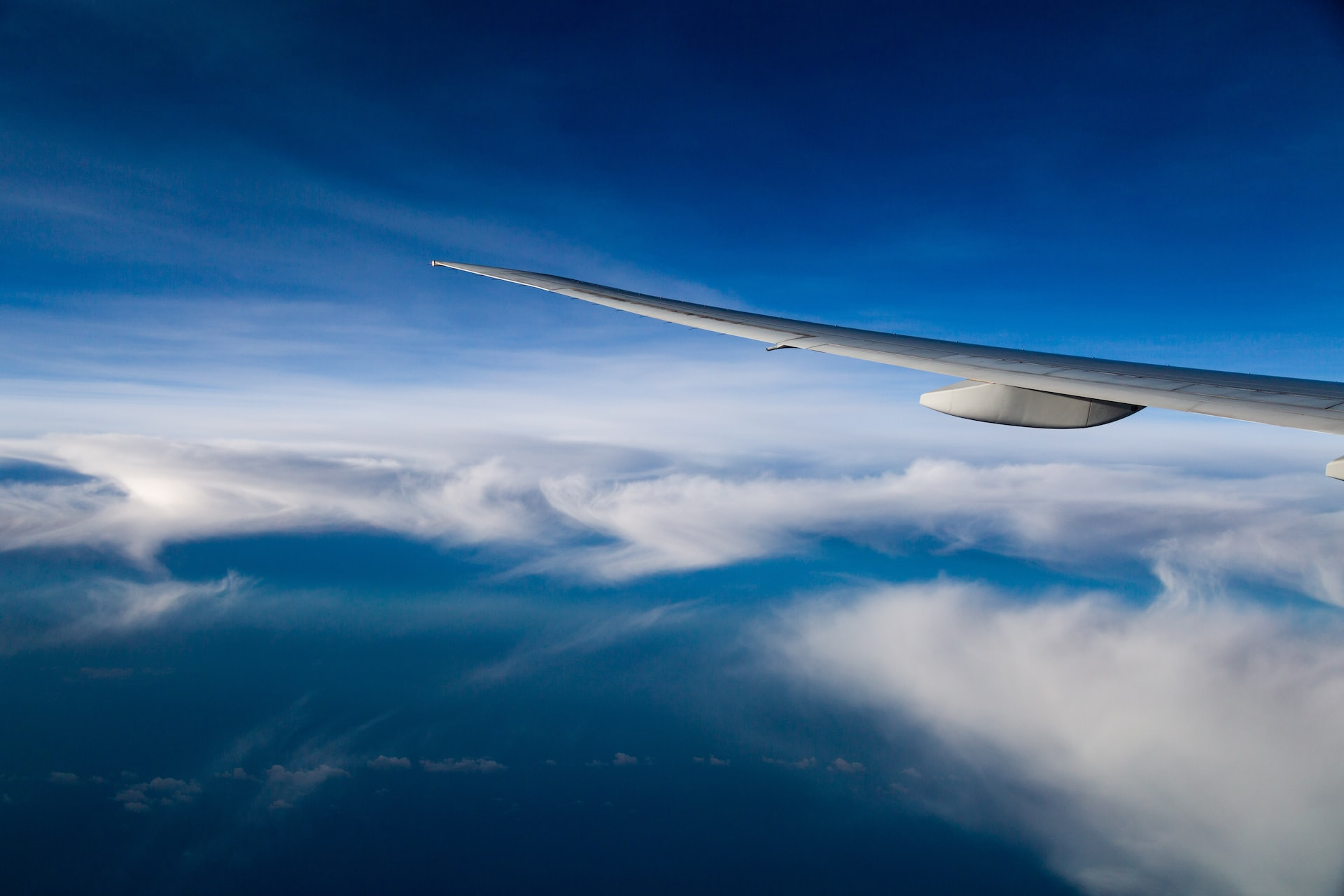
Hypoxia
Symptoms of hypoxia:
- Euphoria and behavioral changes (a feeling or state of intense excitement and happiness).
- Coordination issues.
- The color blue beneath the fingernails
- Sweating
- Increased breathing rate as a result of a shortage of oxygen
- Vision loss or degradation
- Dizzy sensations
At 22,000 feet, the capacity to take corrective action can be lost in 5 minutes, and at 40,000 feet, it can be lost in 7-10 seconds. If a rapid decompression condition occurs in pressurized cabins, these durations will be reduced even further.
To treat hypoxia these steps should be followed:
- Use supplemental oxygen.
- Ensure the regulator is working.
- To avoid hyperventilation, monitor your breathing rate and depth by consciously slowing your breathing.
- If it is safe to do so, descend to below 10,000 feet, where the oxygen level in the atmosphere is sufficient.
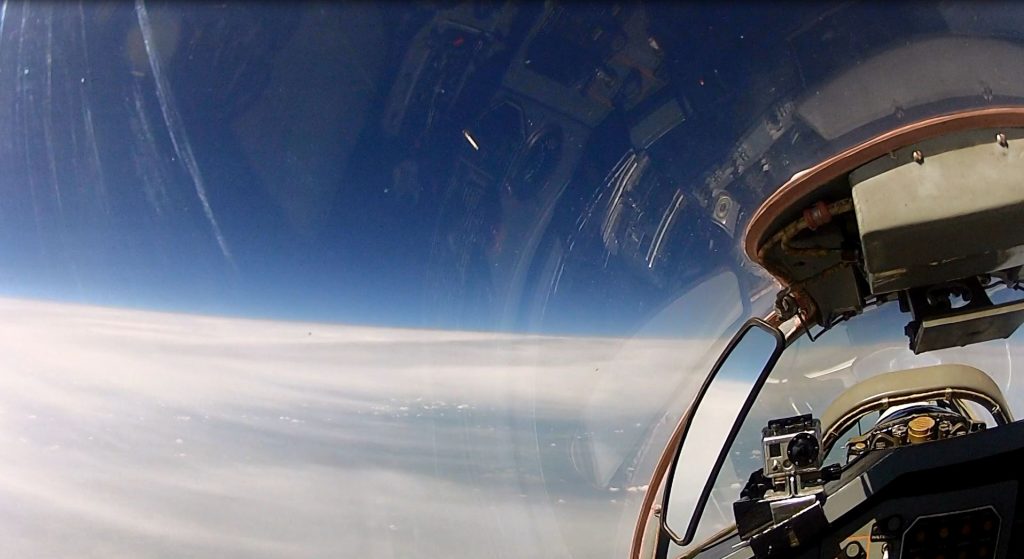
Effects on Airplane Characteristics
When prior incidents were investigated, it was discovered that in certain cases, the grasp of a pilot about aerodynamic changes at high altitudes was insufficient. FL250 is the height at which high-altitude flights are considered (25,000 feet). This is also the altitude at which oxygen masks are necessary for passengers to be ready in the event of an emergency.
True airspeed (TAS) rises with increasing altitudes, but the efficacy of aerodynamic controls and natural aerodynamic damping are both reliant on indicated airspeed (IAS), which does not vary significantly.
Coffin corner
Pilots who ascend too far in a high altitude flight can experience a condition known as coffin corner, in which an airplane can stall if its speed is reduced, but if its speed is increased, it will reach a critical Mach number limit, causing shock waves to form on particular spots usually over the wings. To get out of this position, the only way is to get out of the corner.
Pilots must be cautious at altitudes when the operational envelope is limited since there is no room for complacency. When flying over FL250, the Federal Aviation Administration recommends:
- Recognize and confirm the situation.
- Do not over control, do not use large control movements, instead use small control pressures.
- Be smooth with pitch and power to correct speed deviations.
- Slower cruising speeds are a concern (L/D max). These speeds decrease the time to recognize and respond to speed decay during cruise at higher altitudes.
- Be aware of outside temperature and thrust available.
- If a condition or airspeed decay occurs, take immediate action to recover by reducing the bank angle, increasing the thrust, and descend.

High Altitude Endorsement Flight Training
Safety is the number one goal of all airmen and instructors. Training and endorsement taken upon completion are aimed to increase safety. An endorsement marks and formalizes events such as an operating privilege or authorization granted or a limitation incurred. Training and endorsement required are identified by FAA.
As previously stated, Part 61 outlines the standards for each pilot’s eligibility, aeronautical knowledge, flight proficiency, and aeronautical experience.
What subjects do you need to cover for high altitude endorsement?
The following subjects should be covered in ground training for 61.31’s high altitude endorsement:
- High altitude aerodynamics and meteorology.
- Respiration.
- Effects, symptoms, and causes of hypoxia and any other high altitude sickness.
- Duration of consciousness without supplemental oxygen.
- Causes and effects of gas expansion and gas bubble formation.
- Preventive measures for eliminating gas expansion, gas bubble formation, and high altitude sickness.
- Physical phenomena and incidents of decompression.
- Any other physiological aspects of high altitude.
Except as provided in paragraph (g)(3) of this section, no individual may act as pilot in command of a pressurized aircraft unless that person has received and logged training from an authorized instructor in a pressurized aircraft, or in a full flight simulator or flight training device that is representative of a pressurized aircraft, and obtained an endorsement in the person’s logbook or training record from an authorized instructor who found the individual proficient in the operation of a pressurized aircraft. The flight training must include at least the following subjects:
- Normal cruise flight operations while operating above 25,000 feet MSL;
- Proper emergency procedures for simulated rapid decompression without actually depressurizing the aircraft; and
- Emergency descent procedures.
If you completed your pilot in command proficiency check under Parts 121, 125, or 135, you do not need extra ground training or endorsements if you can document your flight training in a pressurized airplane or a full flight simulator or flight training device that can substitute a pressurized airplane that meets training requirements.
When you meet all flight training and endorsement required as a pilot, the instructor pilot will give your high altitude endorsement by writing it to your logbook by mentioning your pilot certificate number.

Pilot In Command (PIC)
The pilot in command of an airplane is directly accountable for, and the final authority on, the aircraft’s operation. In the event of a flight emergency that necessitates urgent action, the pilot in command may depart from any regulation of 14 CFR 91.3 to the degree necessary to meet that emergency.
When training requirements are met, the instructor will issue a pilot certificate, rating, or endorsement after completing a specific course regarding flying an airplane at a certain class or condition.
Without having the required ground training, pilot certificate or high altitude endorsement one can not fly the airplane as a pilot in command. Flying an airplane is regulated by many procedures to assure safety.
For instance, if you want to fly a multi-engine aircraft as a pilot in command you need a multi-engine rating pilot certificate to prove you are proficient in the operation of this class of airplane.
Similarly, if you do not have a rating that includes a class about flying above FL250 (such as a part 121 pilot certificate), you are not permitted to be a pilot in command in such an airplane. Another example of a high-performance endorsement is flying an airplane with an engine that produces more than 200 horsepower.

FAQ
What is considered high altitude for an aircraft?
The flight of an airplane over FL250 (above 25,000 feet) is called high elevation. Aircraft flight planning should be done in accordance with the procedures for this type of flight to ensure the safety of the pilot and passengers.
How high can you fly unpressurized?
Even if your oxygen saturation drops, you can fly up to 12,000 feet without being pressurized. Because of the properties of the atmosphere, oxygen saturation will start to fall rapidly at this height. Of course, you can fly higher by utilizing oxygen supplementary.
At what altitude does the FAA require oxygen?
When flying over 14,000 feet, the Federal Aviation Administration requires oxygen. Supplemental oxygen should be carried if you plan to fly for more than 30 minutes over 12,500 feet.
Can you get a high-performance endorsement as a student pilot?
You certainly can. There are restrictions on what you may and cannot fly as a student pilot, but this is not an impediment to obtaining this endorsement or high-performance endorsement airplane after completing the necessary ground course and flight training in a flight simulator.
Start learning from the best minds now
- Check your knowledge with quizzes
- Pre-recorded certified courses
- Study on different devices
- Virtual classes/Live sessions
- Pre-recorded Aviation management courses
- Obtain Aeroclass Certificate
